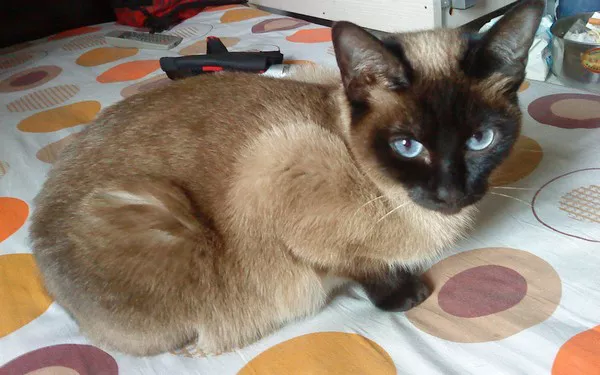Welcoming a new kitten into your home is an exciting experience, but it comes with the responsibility of ensuring that your new feline friend is properly litter trained. Litter training is a crucial part of cat ownership, as it helps maintain a clean and hygienic environment for both you and your kitten. In this comprehensive guide, we will explore the steps and tips on how to litter train a kitten effectively, ensuring a smooth and successful transition to using the litter box.
When to Start Litter Training:
The ideal time to begin litter training your kitten is around four weeks of age. However, the process can vary depending on your kitten’s individual development. Here’s a step-by-step guide to help you through the process:
Supplies You’ll Need:
Before you start the litter training process, gather the necessary supplies:
Litter Box: Choose an appropriately sized litter box for your kitten. Some litter boxes are designed specifically for kittens, featuring lower sides for easy access.
Kitten-Safe Litter: Opt for a high-quality, unscented, and clumping litter. Avoid using clumping clay or clumping litters with added fragrances, as they can be harsh on a kitten’s delicate respiratory system.
Scoop: A litter scoop makes cleaning the box quick and easy.
Soft Towels or Newspaper: These can be used during initial training if your kitten has accidents outside the litter box.
Treats or Rewards: Use small treats or praise to reward your kitten for successful litter box use.
Step-by-Step Guide to Litter Training:
Follow these steps to successfully litter train your kitten:
Choose the Right Location:
Place the litter box in a quiet, easily accessible, and low-traffic area. Avoid areas with loud noises or high foot traffic, as these can be intimidating for kittens.
Ensure the location is far from your kitten’s food and water dishes. Cats prefer to keep their eating and elimination areas separate.
Introduce the Kitten to the Litter Box:
Gently place your kitten in the litter box after meals, playtime, or when you notice signs that they may need to relieve themselves, such as sniffing or circling.
Let Your Kitten Explore:
Allow your kitten to explore the litter box on their own. Kittens are naturally curious, and they may dig and paw at the litter to investigate.
Watch for Signs:
Keep a close eye on your kitten’s behavior. If you see them beginning to eliminate outside the box, gently pick them up and place them inside the box.
Positive Reinforcement:
When your kitten successfully uses the litter box, praise and reward them with a small treat or affectionate praise. This reinforces the idea that the litter box is the right place for elimination.
Maintain Cleanliness:
Regularly scoop and clean the litter box to keep it fresh and appealing to your kitten. Kittens are more likely to use a clean box.
Be Patient:
Litter training may take time, and accidents are normal, especially during the early stages of training. Avoid punishing your kitten for accidents, as this can create anxiety and fear of the litter box.
Transition to Solid Food:
As your kitten transitions to solid food, you may notice changes in their elimination patterns. Be prepared to adjust the frequency of litter box visits accordingly.
Provide Multiple Litter Boxes:
If you have a large home, consider placing multiple litter boxes in different areas. This ensures that your kitten can easily access a litter box when needed.
Monitor Health:
Keep a close eye on your kitten’s overall health. If you notice any changes in their litter box habits, such as straining or frequent trips to the box with minimal output, consult a veterinarian. These may be signs of health issues.
Common Challenges in Litter Training:
While most kittens adapt to litter training with ease, you may encounter some challenges along the way. Here are common issues and how to address them:
Litter Aversion: If your kitten appears hesitant to use the litter, try different types of litter to see which one they prefer. Some kittens have texture preferences.
Litter Box Size: Ensure that the litter box is the right size for your kitten. The sides should be low enough for easy access.
Location Issues: If your kitten consistently eliminates outside the litter box, consider moving the box to a more secluded and quiet area. Gradually transition it back to the desired location once your kitten is consistently using it.
Stress and Anxiety: Stress or changes in the environment can affect litter box use. Ensure a calm and consistent routine for your kitten to reduce anxiety.
Medical Issues: Health problems can impact litter box behavior. If your kitten is experiencing difficulties, consult a veterinarian for a thorough examination.
The Importance of Positive Reinforcement:
Positive reinforcement is a key aspect of successful litter training. When your kitten uses the litter box correctly, offer praise and treats to create a positive association. This encourages your kitten to continue using the litter box and reduces the likelihood of accidents.
Conclusion:
Litter training a kitten is an essential part of responsible cat ownership. With patience, positive reinforcement, and the right supplies, you can successfully train your kitten to use the litter box. Remember that kittens may take time to adapt, so be patient and understanding during the process. A well-trained kitten is more likely to develop good litter box habits that will last a lifetime.
























